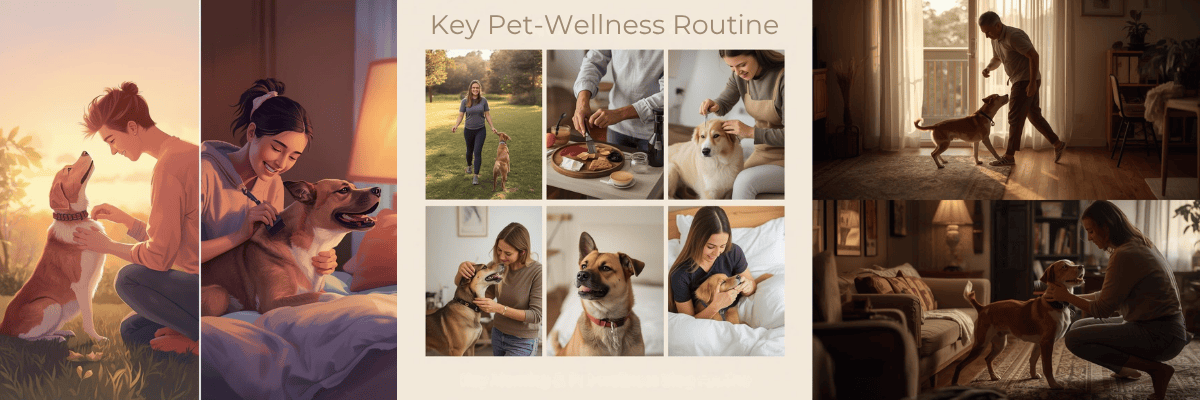Introduction
You may have heard the old saying that dogs only have a “three-second memory,” implying they quickly forget everything from scoldings to training commands. But if that were true, how could dogs learn complex tricks, recognize their owners after months apart, or remember where their favorite toy is hidden?
The truth is, dogs’ memory is far more sophisticated than this common myth suggests. While their brains don’t function exactly like ours, research shows they are capable of forming lasting memories, both good and bad. Understanding how your dog’s memory really works is not only fascinating—it’s also key to training effectively, preventing frustration, and strengthening your bond with your four-legged companion.
In this post, we’ll explore the science of canine memory, bust the myths, and give you practical tips to work with your dog’s unique way of remembering.
Types of Memory in Dogs
Just like humans, dogs don’t rely on just one kind of memory. Instead, they use a mix of memory systems that help them navigate daily life, learn new skills, and form bonds with the people and animals around them.

1. Short-Term Memory (STM)
Short-term memory is the ability to hold information for a brief period—seconds to minutes. For dogs, studies suggest their short-term memory may last around 1–2 minutes, though it varies depending on the situation. For example, a dog may forget where a ball landed if distracted, but they might remember a scolding just long enough to change their immediate behavior.
2. Long-Term Memory (LTM)
Long-term memory is where dogs really shine. Once something is learned and reinforced, dogs can remember it for months, years, or even a lifetime. This is why they don’t forget basic commands, familiar people, or places they’ve visited often. Positive or negative experiences, such as consistent training or trauma, also leave lasting impressions.
3. Associative Memory
Dogs excel at associative memory, which allows them to connect events, actions, or people with specific outcomes. For instance, the sound of a leash being picked up means “walk time,” the word “treat” means food is coming, and the sight of a suitcase might mean their owner is leaving. Unlike humans, who can recall detailed events, dogs mostly remember through these associations.
The Myth of the Three-Second Memory
One of the most persistent misconceptions about dogs is that they have a memory span of only three seconds. According to this idea, if a dog misbehaves and you correct them after a short delay, they won’t understand why they’re being scolded. While it’s true that dogs don’t process memories exactly the way humans do, this “three-second rule” oversimplifies and misrepresents how canine memory actually works.

The origin of this myth likely comes from misunderstandings about short-term memory and how dogs learn best. Because dogs rely heavily on associative memory, they respond most effectively to immediate feedback—reward or correction works best when delivered right after the behavior. If the timing is off, the dog may not connect the feedback to their action.
But this doesn’t mean dogs forget everything after a few seconds. Countless examples—such as recognizing their owner’s voice, remembering a command learned months earlier, or avoiding places tied to negative experiences—prove that their memory is much stronger and more complex than this myth suggests.
How Dogs Actually Remember
Dogs may not replay memories in their minds the way humans do, but they store and recall information through a combination of association, repetition, and emotional impact.

1. Episodic-Like Memory
While true episodic memory (recalling specific events with detail, like humans) is debated in dogs, research suggests they have episodic-like memory. This allows them to remember events or actions, especially if they are tied to something meaningful—like remembering where you hid a treat or recalling a command you taught yesterday.
2. Emotional Memory
Emotions play a huge role in how dogs remember. Positive experiences, such as praise, play, or food rewards, strengthen memory pathways, while negative ones—like fear, neglect, or trauma—can leave lasting scars. This explains why rescue dogs may remain fearful of certain triggers even years later.
3. Habit and Repetition
Repetition cements long-term memory in dogs. Consistent training builds strong associations: “sit” means sitting gets rewarded, “come” means moving toward the owner brings praise or treats. The more consistent the training, the stronger the memory becomes.
4. Sensory Cues
Dogs also rely heavily on smell, sound, and visual cues. A familiar scent can instantly trigger recognition, even after long separations. This is why dogs can recognize their owner’s belongings, or even track them across miles using scent.
In short, dogs remember through a blend of instinct, learned associations, and emotional experiences rather than consciously recalling events as humans do.

Practical Implications for Training
Understanding how dogs remember can transform the way you approach training and communication with your furry friend. Instead of thinking of your dog as forgetful, it’s important to work with their memory system.

1. Timing Is Everything
Dogs connect actions with consequences best when the feedback is immediate. If you reward a dog for sitting even a few seconds too late, they may associate the reward with standing back up instead of sitting. Quick, precise timing builds clearer associations.
2. Repetition Builds Habits
Just like humans, dogs need practice to reinforce learning. Consistently repeating commands in different contexts helps transfer skills from short-term to long-term memory. Sporadic training leads to weaker associations.
3. Keep It Positive
Because emotional memories stick strongly, positive reinforcement—treats, praise, or play—creates lasting, happy associations with commands. Harsh punishment, on the other hand, can cause fear-based memories that may harm trust without improving learning.
4. Use Cues Dogs Remember Best
Leverage a dog’s natural strengths: their keen sense of smell, hearing, and ability to recognize body language. Pair verbal commands with consistent gestures or cues to help them recall faster and more reliably.
By aligning your training approach with how dogs actually process and retain information, you’ll not only make learning more effective but also strengthen the bond you share with your pet.

Conclusion: A Deeper Appreciation of Dog Memory
Dogs may not remember every detail of their lives the way humans do, but their memories are far from fleeting. Through a mix of associations, emotions, and repetition, they carry with them lasting impressions that shape their behavior and their bond with us.
The next time your dog greets you with uncontainable joy after a long day—or remembers a trick you taught months ago—you’re witnessing the power of their unique memory system at work. By respecting how dogs process and retain experiences, we not only train them more effectively but also deepen the trust and connection that makes them such extraordinary companions.




Leave a Reply